Everything You Need to Learn Old English
Do you want to know the language of the Anglo-Saxons?
Want to read Beowulf – in the original?
Wish you could recite the Old English version of the Lord’s Prayer?
Maybe you just want to learn how to pronounce the letter þ (thorn)?
Whatever you want to do, you will find, below, everything you need to get started learning Old English, from the historical origins of the English language, to the basics of Old English pronunciation and grammar, to information about the Old English classes we offer at the Ancient Language Institute.
Let’s get started.
Table of Contents

The Origins of the English Language
The English language as we know it today is the product of a long history spanning thousands of years.
How did English get started? No one created the English language: it emerged between the 1st and 4th centuries AD out of a group of dialects spoken along the coast of the North Sea, in the western part of modern-day Denmark and the northwest coast of modern-day Germany. From there, it was carried into what we now call England in the 5th century AD by migrations of peoples known to history as the Angles, Saxons, and the Jutes.
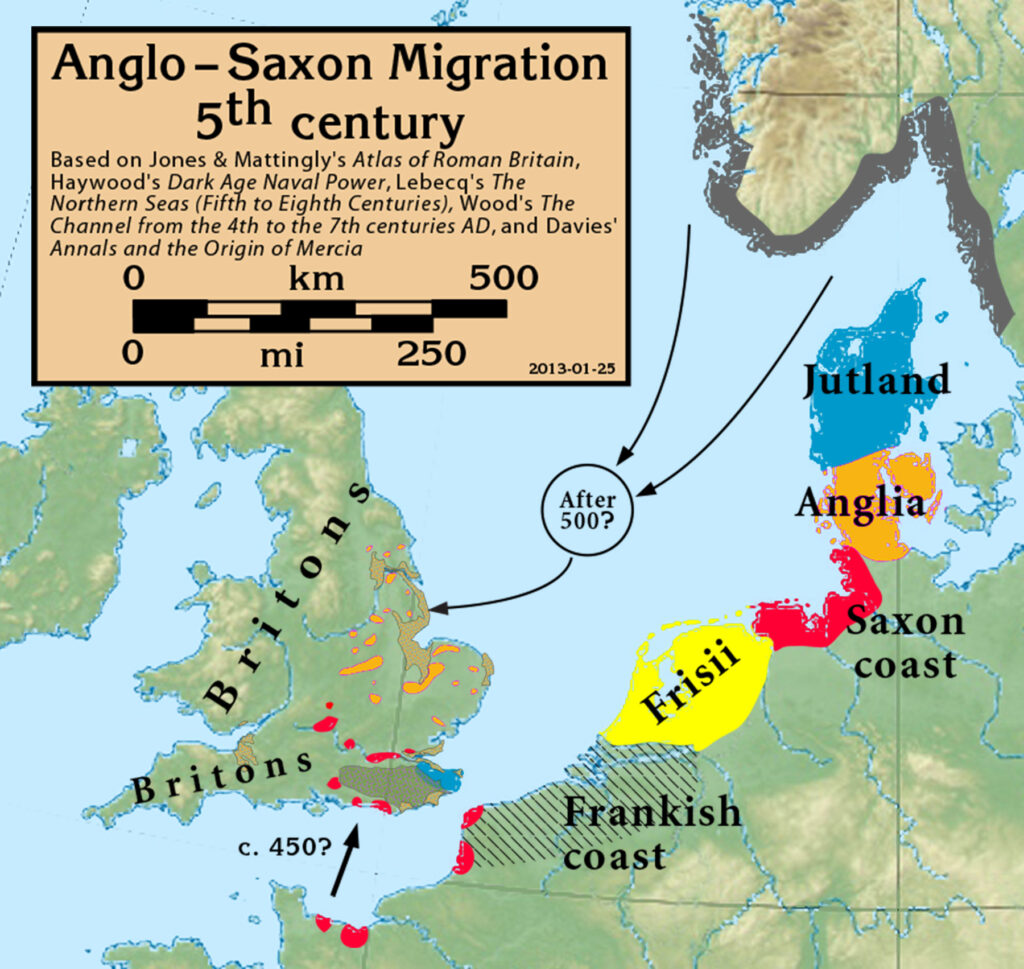
It’s from the Angles that the English language gets its name. To distinguish this stage of the English language from those that came later, we call the language that the Angles, Saxons, and Jutes spoke “Old English,” or alternatively, “Anglo-Saxon.”
Once in England, this Old English language developed gradually into the Modern English we know today, although it changed a great deal along the way.
Is English a Germanic Language?
Yes, English is a Germanic language. That means it is related to the other Germanic languages. (What languages are Germanic? Some examples include German, Dutch, and the Scandinavian languages).
Why is English a Germanic language, especially since it looks and sounds so much more like a Romance language (i.e. a language descended from Latin, the language of the Romans)? Indeed, many of the words in English look a lot more like their French equivalents than their equivalents in German: compare English society with French société versus German Gesellschaft. It is true that only about 25% of the words in English are actually Germanic in origin. Despite this, we can still say that English is a Germanic language like German and not a Romance, or Latin-derived, language like French. Why?
Language relationships are not based solely on comparing the number of words that come from one language versus another. It matters how those words got into the language. Were they inherited, that is passed down from generation to generation all the way back into the mists of time? Or were they borrowed at some time in the past from another language?
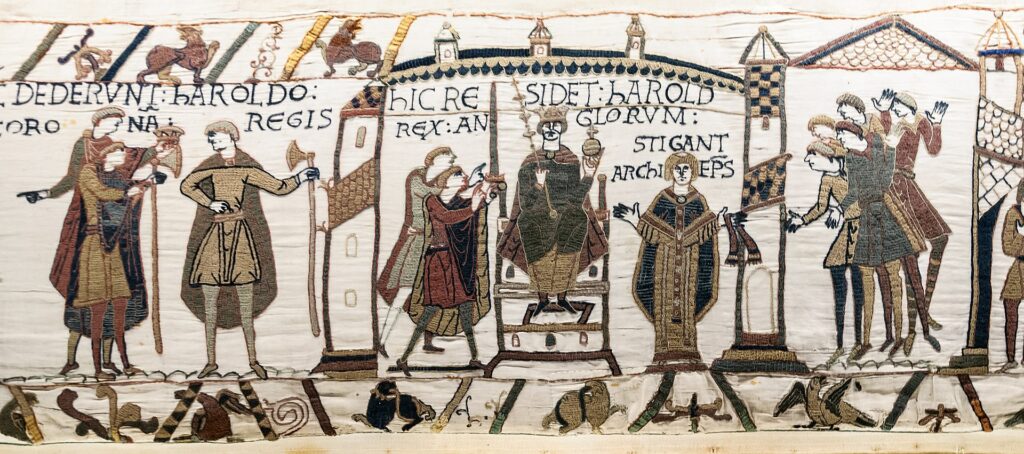
Two friends could have the same hobbies, have the same job, have the same mannerisms, have the same style and presentation, and even split rent and have the same home address. They will likely resemble each other much more than either resembles his own uncle. But those friends are not in the same family, even though they may appear much more similar on the surface than a nephew and uncle do. Nevertheless, it’s the nephew and the uncle who are blood-related to each other.
Something like this happened with English and French. French moved into (well, invaded) England, and English ended up adopting tons of French words into its vocabulary. But English existed long before that happened, so even though its temporary French roommate rubbed off on English quite a bit, English didn’t become a Romance language. It just became a very French-looking Germanic language.
Languages, like people, are only “blood-related” when they spring from the same source. For people, you can trace two relatives’ ancestry back to the same person: a grandmother, a great-grandfather. For languages, it’s very similar: two languages are related if, as you go back through the generations, they become more and more similar until they reach a point where they are the same language.
For this reason, we can confidently say that English is a Germanic language.
†††

Dr. Colin Gorrie, Old English & Latin Fellow of the Ancient Language Institute
These days, when Old English is taught at all, it’s typically taught by handing students a grammar book and a collection of texts and translating them by brute force. We know from our experience with Latin, Ancient Greek, and Biblical Hebrew that there is a better way to learn historical languages: through conversation and by reading level-appropriate texts. With ALI’s approach, you’ll be amazed at how quickly you’ll start to be able to understand Old English on its own terms. Beowulf awaits!
†††
Old English Literature
Of the early Germanic languages, Old English is one of the earliest for which we have written texts. And we have lots of them, showing the literary wealth of Anglo-Saxon culture: over 400 manuscripts survive from the Anglo-Saxon period, which means that a student of Old English will not run out of reading material any time soon.
The people who wrote this literature are known to history as the Anglo-Saxons. Who were the Anglo-Saxons? They emerged from a group of Germanic tribes called the Angles, the Saxons, and the Jutes. They lived along the coast of the North Sea, in modern-Day Denmark and northwestern Germany, around the time of the fall of the western Roman Empire. When these peoples made their way to England they mixed together and developed a shared sense of cultural identity as “English”. Politically, they melded as well: faced with the need to defend against increasingly dangerous attacks from the Danes (the descendants of another Germanic people who stayed in Denmark – which is named after them – when the Angles, Saxons, and Jutes left), they developed a common sense of political identity as Anglo-Saxons.
Although vestiges of their pagan past linger in their literature, the Anglo-Saxons had become Christian by the seventh century, long before almost everything they wrote down: literacy had come along with Christianity. In those days, the ability to read and write was limited to a very small portion of the population: if you were literate in Anglo-Saxon England, you were almost certainly a monk or a student at a monastic school. Although most of what the Anglo-Saxons wrote was religious in character, we can’t define Anglo-Saxon literature exclusively in religious terms: secular texts existed too, in both poetry and prose.
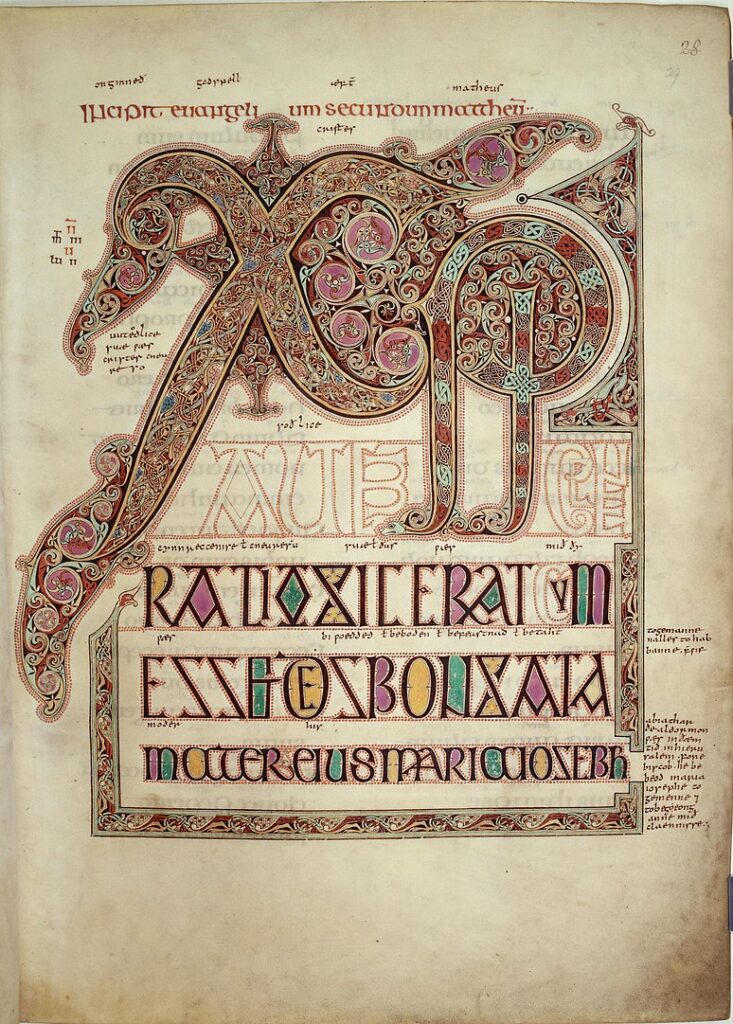
Old English Poetry
Probably the most famous Old English text is a poem: this is Beowulf. Beowulf can be read in many ways: as a historical document of Anglo-Saxon hero culture, as a view into the complexity and contradictions of a Christian culture wrestling with its pagan past, or simply as a great adventure story.
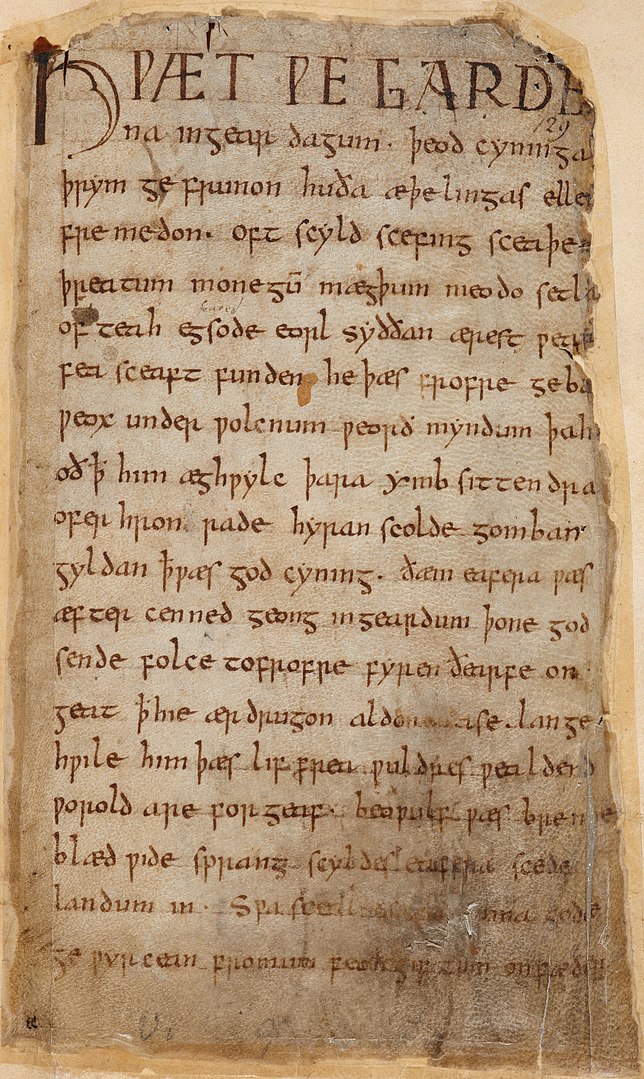
The circumstances around Beowulf’s composition are mysterious: it survives only in a single manuscript. After the Norman Conquest, it likely languished in some monastery library for hundreds of years, before being rediscovered by an Elizabethan collector named Sir Robert Cotton, whose collection (after surviving a fire) eventually became the foundation of the British Library. The manuscript seems to have been written in the early 11th century, but the language of the poem shows evidence of being older than that: based on some subtle details of how the poetry works, many scholars believe Beowulf was composed in the early 8th century. Although the version of Beowulf in the manuscript is written in the standard West Saxon dialect (as spoken around the capital, which was Winchester at the time), there are signs that the original was composed in Mercian, one of the other Old English dialects, this one spoken in the English Midlands.
For readers used to later forms of English poetry, such as the verse written by Chaucer or Shakespeare, Beowulf (and Old English poetry in general) often appears strange: instead of iambic pentameter (e.g., Shall I compare thee to a Summers day?), we get a line divided into two alliterating halves – each half had to contain words beginning with the same consonants – with a great variety of rhythms possible (e.g., Weox under wolcnum || weorðmyndum þah; Þeodcyninga || þrym gefrunon).
The requirement that both halves of a line must alliterate provides opportunities for a famous literary device of Old English poetry: the kenning. A kenning is a poetic circumlocution, a way of indirectly making reference to a thing or concept: for example, instead of sea, you might write whale-road. Instead of sun, you might say sky-candle. We still do this today occasionally: have you ever heard a raccoon called a trash-panda? That’s a kenning too! Kennings gave Anglo-Saxon poets a chance to show off their creativity and at the same time choose a way referring to a thing that fit in with the alliteration each line required.
But Beowulf is not the only Old English poem worth reading. Another heroic poem, Genesis, tells the story of Satan’s war on Heaven and the Biblical story of the Fall of Man in the style of Old English heroic verse – like a pre-Miltonic Paradise Lost!
þa spræc se ofermoda cyning, þe ær wæs engla scynost,
hwitost on heofne and his hearran leof,
drihtne dyre, oð hie to dole wurdon,
þæt him for galscipe god sylfa wearð
mihtig on mode yrre.
Then spoke that berserker king,
he who was before the most shining of angels,
brightest in Heaven and beloved of his Leader,
dear to the Lord, until he turned to folly
thinking because of his desires
that he could become God Himself, (tr. Oldrieve)
There are also beautiful elegiac poems such as The Wanderer and The Seafarer, which meditate on the fleeting nature of life. Here are a few lines from The Wanderer, in which a lonely exile recalls the days of his youth as a warrior in the service of his lord:
Hwær cwom mearg? Hwær cwom mago? Hwær cwom maþþumgyfa?
Hwær cwom symbla gesetu? Hwær sindon seledreamas?
Where have the horses gone? where are the riders? where is the giver of gold?
Where are the seats of the feast? where are the joys of the hall? (tr. Liuzza, 2014)
Old English Prose
Besides its poetry, Old English also has a rich corpus of prose in a variety of genres, both religious and secular. In the religious category, there are many homilies, biblical translations, and lives of saints to choose from.
Many religious texts were translated by King Alfred the Great (who reigned from 871–899), who wanted his subjects to be educated first in English rather than in Latin. For that reason, King Alfred himself wrote or commissioned Old English versions of what he saw to be the most important works of philosophy and religion: the Pastoral Care of Gregory the Great, Boethius’ Consolation of Philosophy, the Soliloquies of St. Augustine, as well as the first fifty Psalms.
The Bible was never translated into Old English in its entirety: besides the partial translation of the Psalms attributed to King Alfred, we also have Old English translations of the four Gospels, the Hexateuch (Genesis through Joshua), and abridged translations of Judges, Kings, Job, Esther, Judith, and Maccabees. Doubtless there were other translations now lost to us. We know of one such lost translation in particular, a version of the Gospel of John translated by Bede, a monk who lived in Northern England in the 7th–8th centuries.
The source for all of these Old English translations was the Latin Vulgate. Here is a side-by-side example of one of the Ten Commandments in Latin, Old English, and the Early Modern English of the King James version:
Non habebis deos alienos coram me.
Ne lufa ðu oþre fremde godas ofer me.
(lit. Do not love other, foreign gods over me.)
Thou shalt have no other gods before me.
If you’re more interested in secular literature, there are historical works such as the Anglo-Saxon Chronicle, which is a year-by-year record of events in the history of English. It is an extremely important source for historians studying the history of Anglo-Saxon England.
Other important prose works include technical manuals on mathematics, medicine, geography, and grammar, as well as a large selection of legal texts, including not only laws themselves, but also wills and records of legal cases, which give us a good view of what social life was like during Anglo-Saxon times.
Old English vs. Modern English
The language we know as Old English was never a static thing. Like all living languages, it changed from one generation to the next. The Old English spoken by the Angles, Saxons, and Jutes who came to England in the 5th century had changed a lot by the 11th century, but these changes were gradual and slow enough that we can think of the language as spoken from the 5th to the 11th centuries as Old English.
Here’s the introduction to Beowulf, a poem whose date of composition is uncertain but dates somewhere between the 8th and 11th centuries:
Hwæt. We Gardena in geardagum,
þeodcyninga, þrym gefrunon,
hu ða æþelingas ellen fremedon (Beowulf 1–3)
As you can probably see, Old English is essentially a “foreign language” even for a native English speaker. The process that bridges Old English to Modern English took place over centuries. The political and linguistic situation changed dramatically when another group of people came to England in the year 1066: the Normans. The arrival of the Normans, who spoke an early form of French, marks the end of the Old English period. It wasn’t as if everyone radically changed their way of speaking in 1066. Gradual change went on as before, but English fell out of the historical record, as the Normans preferred to use their own scribes brought over from France, who spoke French, and wrote in either French or Latin. Although ordinary people kept speaking English, the upper classes were native French speakers for many generations. As a result, there were very few works written in English from the 12th until the 14th century, by which point the upper classes had largely assimilated to English culture.
By the time English started being widely written again in the 14th century, it now looked very different, as if all the changes of the intervening centuries showed up at once. We call this stage of the language Middle English. Since so much official business had been done in French, especially from the 11th to 14th centuries, many words from French found their way into English during this period as well. This is the period in which Chaucer wrote The Canterbury Tales. Looking at an excerpt from The Canterbury Tales allows us to see the degree to which French had begun to influence English:
Whan that Aprill, with his shoures soote
The droghte of March hath perced to the roote
And bathed every veyne in swich licour,
Of which vertu engendred is the flour;
(General Prologue to The Canterbury Tales, 1–4)
Of the 30 words in this excerpt, the 8 words marked in boldface derive from French. That’s almost a quarter of the passage.
The Middle English period conventionally lasted from 1066 until the mid-16th century. What changed in the 16th century? The development of the printing press and the widespread publication of English versions of the Bible, which started to stabilize the written language. Although we often experience technological change as “speeding things up”, advances in communication technologies, such as printing, often “slow things down” in that they standardize and fossilize language.
Old English vs. Middle English vs. Modern English
If you’re wondering which of these terms corresponds to medieval English, you could say that both Old English and Middle English were medieval forms of the English language. If you assume the Middle Ages lasted from around AD 500 to 1500, Old English fits into the first half of that time period and Middle English fits into the second half.
If we keep that conventional division between ancient and medieval history in the year AD 500, only the very earliest forms of English could be called “ancient”. Since we don’t have almost any Old English writing until AD 650, information about this early “ancient” period in the history of English is very hazy, but very interesting to historical linguists.
By the 16th century, however, the language spoken in England had begun to look a lot like our own: for this reason, this period in the history of English is called Early Modern English. This is the language of Shakespeare:
Shall I compare thee to a Summers day?
Thou art more louely and more temperate:
Rough windes do shake the darling buds of Maie,
And Sommers lease hath all too short a date: (Sonnet 18)
It is a popular misconception that Old English is the language Shakespeare wrote in. Although Shakespeare’s English is old – he wrote 400 years ago – Old English is much older than Shakespeare’s English. Shakespeare’s language has a great deal more in common with our own English than with the English of Beowulf. This is why we can expect high school students to read Shakespeare’s plays with nothing but a glossary to help clarify some archaic words, but Old English requires a whole course of study: for all practical purposes, it’s a foreign language.
It’s only in the past two centuries that Old English has begun to be studied again by scholars and by others with an interest in the language, literature, and culture of the early Middle Ages in England.

Old English Grammar
For a speaker of Modern English, Old English is a fascinating mixture of the strange and the familiar. Many words in Old English look identical, or at least very close, to their modern equivalents: land means ‘land’, folc means ‘folk’, wel means ‘well’.
But other words, like wæstm (meaning ‘fruit’) or þearf (meaning ‘need’) give us no clues, not to mention the fact that they’re written with unfamiliar letters. And when it comes to grammar, Old English looks stranger still to the speaker of Modern English. Let’s take a look at some of the ways Old English differs from Modern English.
What Is Old English?
The biggest difference between Old English and Modern English is that Old English is an inflected language.
Unlike Modern English, which tends not to change the forms of words in order to fit them into a sentence, Old English words often look quite different depending on the sentence they appear in.
For example, the word “king” doesn’t change its form or spelling depending on its grammatical use:
The king is here. (king = subject)
I gave the king the sword. (king = indirect object)
But, in the equivalent Old English sentences, the word cyning (‘king’) does not look the same – it changes its form based on the grammatical role it plays:
Sē cyning is hēr. (cyning = subject; this is called the ‘nominative’ case)
Iċ ġeaf þæt sweord þām cyninge. (cyninge = indirect object; this is called the ‘dative’ case)
Does this sound complicated? Guess what – you already use (a very small number of) cases in modern English!
Look at this sentence:
The king’s sword is sharp.
Here’s the Old English equivalent, which uses the ‘genitive’ case:
Þæs cyninges sweord is sċearp.
Do you notice something similar between king’s and cyninges?
You may have never thought about it before, but in order to denote possession, you regularly transform English words into the “genitive case” by adding an ‘s to the end. Although the Modern English possessive ’s doesn’t work exactly like the Old English -es ending, it is nevertheless the descendant of the Old English ending genitive -es.
An aside, if you’re curious: the difference between Old English -es and Modern English ’s is that ’s is what’s called a clitic. It goes on the end of the whole phrase, not the word that refers to the possessor: the Mayor of London’s hand is the hand of the mayor, not of the city.
The inflected nature of the grammar is one of the main differences between Old and Modern English. Grammar aside, though, the vocabulary should look relatively familiar: cyning isn’t too far off from king, especially once you know that the c is pronounced like a k, and sweord and sċearp are only a letter or two away from sword and sharp.
That combination sċ, by the way, is pronounced just like Modern English sh: so you should have no trouble recognizing sċip, fisċ, and bisċop as ship, fish, and bishop.
In fact, once you learn how the letters are pronounced, a modern English speaker can often understand many of the words in any given Old English passage. It’s just the relationships between the words that can pose a challenge.
"Old English" vs. "Anglo-Saxon"
Another word for Old English is Anglo-Saxon. In fact, Anglo-Saxon is the term you’ll see most often in sources from before the middle of the 20th century. Why two different terms for the same language?
Using either one is fine, though we often default to “Old English” because it highlights the continuity of the English language, and reminds us that Old English is the ancestor of Modern English, no matter how many French-isms have been absorbed into our language. There is potential for confusion, however, in using the term “Old English”: since, for example, Shakespeare’s English is still “old” to us. As a result, many people mistakenly think that Shakespeare wrote Old English plays and poetry, when, in fact, he wrote and spoke in what we call Early Modern English (this is the stage of the language people mean when they use the term “Elizabethan”). Using the term “Anglo-Saxon” for the language clears up that confusion.
But the term “Anglo-Saxon” has its own problems. Although the term Anglo-Saxon was used during the early Middle Ages (albeit in its Latin form Anglo-Saxones), it wasn’t a term that the people used to refer to themselves. They just called themselves Englisc ‘English’. Besides, it totally ignores the Jutes! It also excludes anyone else who may have participated in the migration but didn’t retain a group identity once in England, such as the Frisians.
Since “Anglo-Saxon” was neither a term widely used by the people themselves and it does not include all the peoples it purports to describe, it has fallen out of favor in some circles.
Each term has its pros and cons, so you’ll likely see both used at one time or another.
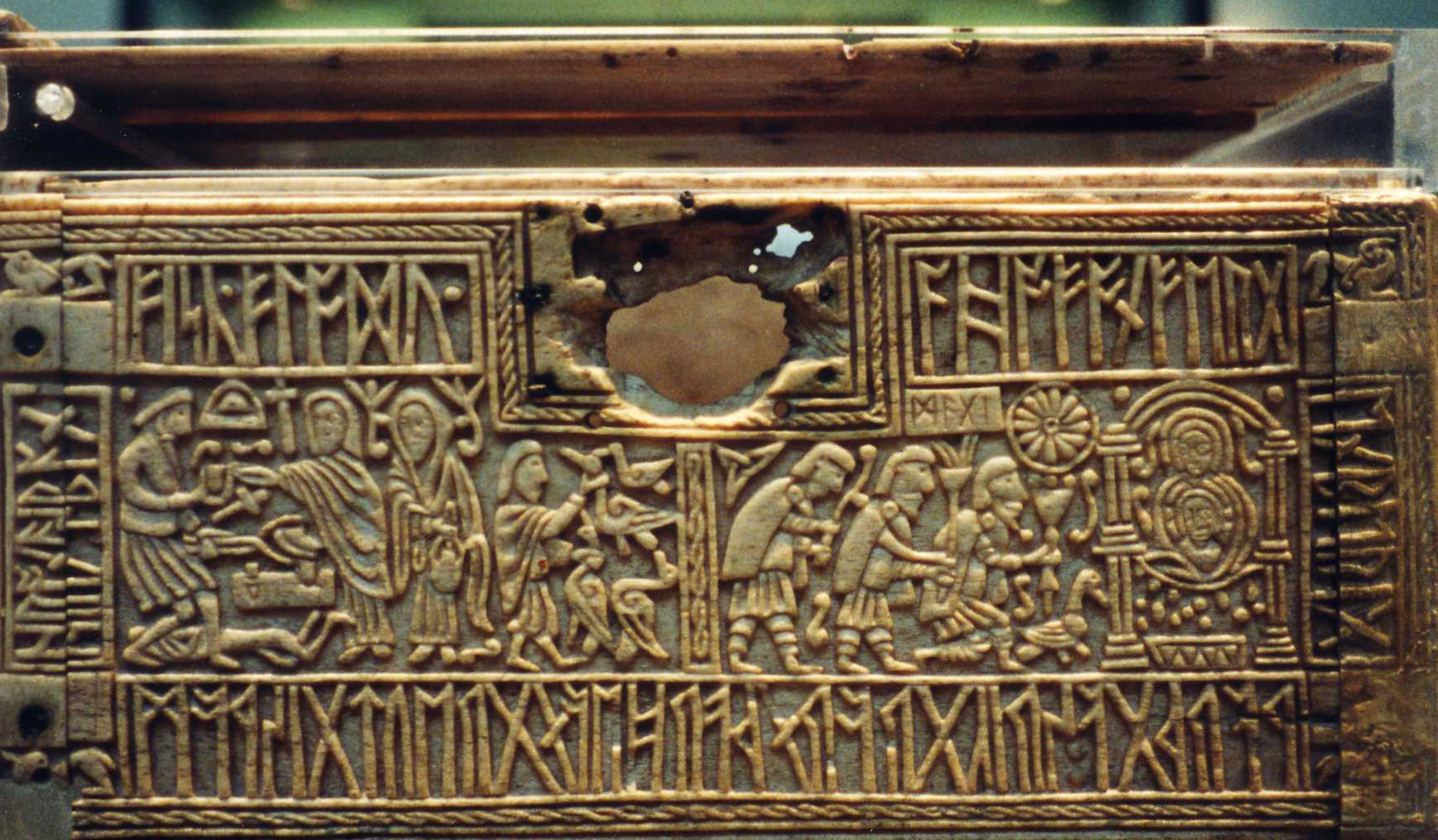
The Old English Alphabet
Old English mostly used a version of the Latin alphabet, the same one Modern English uses.
However, the earliest Old English writing was done in runes, which is the name given to a family of alphabets used by the Germanic peoples before the adoption of the Latin alphabet. The name “rune” comes from an old Germanic word which means ‘secret’, which suggests that knowledge of runes was restricted to an elite, or that runes had some sort of esoteric meaning.
There is a long tradition of associating runes with magic: many runic inscriptions appear to be charms, and magic use of runes is explicitly mentioned in the Sigrdrífumál, an Old Norse text. The Old English runic alphabet was a variant of that used in Scandinavia. But the number of Old English texts written in runes is a very small fraction of the total amount of text written in Old English: runic Old English was mainly used for very short inscriptions on objects.
A particularly beautiful example of Runic Old English can be found on the Franks Casket, where references to the Germanic legend of Weyland the Smith, to Romulus and Remus, and to the Siege of Jerusalem (among other things) are briefly made.
Runic inscriptions aside, Old English was written in the Latin alphabet. But, compared to the version of the Latin alphabet used by Modern English, the Old English alphabet is missing a few letters: k, j, q, v, and z are used rarely or not at all. But Old English used a few letters we don’t: þ, ð, æ, and ƿ. When were they used? Read on.
Thorn Letter: þ
The letter called thorn is written þ (capital Þ). It comes from the Old English runic alphabet. As for the pronunciation of þ, there’s a clue in the name “thorn”: þ makes the sound at the start of the Modern English word thorn.
Depending on where it finds itself in the word, it can also make the sound written th in the Modern English word weather. Although these are technically different sounds, in Old English they were written the same (as they are in Modern English too: both are written with th!).
The English language continued to use þ into the Middle English period but, over time, the shape of the letter þ changed. By the late Middle Ages, the shape of þ had become almost indistinguishable from the letter y. When the printing press was invented, and the machines (which were imported from continental Europe) didn’t have þ, the printers substituted y, which is why we get things like ye (which is really the), in “Ye olde shoppe”.
By the time of the printing press, however, þ had already fallen out of fashion and had been replaced by the two-letter combination th in most words, a situation which remains to this day.
Eth Letter: ð
The letter eth, written ð (capital Ð) was used in Old English in the exact same way that thorn was used: to make the sounds made by the Modern English letter combination th. Fun fact: eth was not the name that the Anglo-Saxons knew the letter by: they called it ðæt (pronounced like Modern English that).
The two letters eth and thorn are interchangeable, and, although they varied in popularity over the years, both were often used on the same page by the same scribe. Unlike thorn, eth does not come from a runic source – it’s a modification of the Latin letter d. Eth lost its popularity much more quickly than thorn, and was already on its way out by the end of the Old English period.
Ash Letter: æ
The name ash is used for a letter that is made up of a combination of the letters a and e that looks like this: æ (capital Æ). This letter was used in Old English for the a sound used in most dialects of Modern English in the words hat or cat. The letter a on its own made a sound more like the vowel sound in father (in most dialects of English). The letter æ is called ash after the name of the equivalent rune in the Old English runic alphabet.
Wynn Letter: ƿ
The letter wynn, written ƿ (capital Ƿ), is another letter adapted from the Old English runic alphabet. It makes the same sound as Modern English w, which replaced wynn in the Middle English period (via the intermediate step of uu, a literal “double u“, which is where we get the name of the letter w from). Most publishers of Old English texts or learning materials don’t bother writing the wynn, but rather substitute w in its place.
Yogh
Another letter you may be wondering about is yogh, written ȝ (capital Ȝ). This letter was used in Middle English, not Old English, but it comes from a form of the letter g used in Old English, the “insular g”: ᵹ. The familiar form of g we use today was introduced in the Middle English period by scribes trained in France. But scribes didn’t get rid of the older insular g. Instead, they adapted it: ᵹ became ȝ. It was used to write a variety of sounds in Middle English, including those which we now write with the letter y (e.g., ȝise ‘yes’) and the combination gh (e.g., niȝt ‘night’). Over the Middle English period, ȝ was gradually replaced with y and gh.
Old English Phrases and Sentences
The speakers of Old English did not leave us a lot of evidence for how they spoke in daily life. In the Middle Ages, literacy was rare, and the production of books was laborious and expensive. People didn’t commit their casual chats to paper – that honor was reserved for works of religion, philosophy, and poetry. Rather formal stuff! This means we don’t know a great deal about the ways people spoke to each other from day to day.
But there are a few places where conversation is recorded: as dialogue in a poem, for example, or in example dialogues intended for use in schools.
The first English conversation ever recorded, in fact, was of the latter type: it occurs in the Colloquy of Ælfric (AD 1010) and is a dialogue between a teacher and student, written in Latin with an Old English version alongside. It was intended to be used as a teaching aid in schools, so it’s likely that it didn’t represent natural conversational speech.
Nevertheless, there’s still enough to have some idea of what the Old English equivalents to common phrases may have been. And where we lack direct evidence, if we’re willing to make educated guesses, we can extrapolate from other early Germanic languages and later forms of English to come up with reasonable guesses for what people may have said in different real-life situations.
Useful Phrases in Old English
In the collection of surviving Old English texts, we have a good selection of greetings and ways of saying thank you in Old English. Here are a few options.
Ic grete þe
‘I greet you’ (addressed to one person)
All of the following mean either ‘hello’ or ‘goodbye’, and should be addressed to one person:
Wes þu hal or hal wes þu.
Literally, this means ‘be healthy’.
Wes gesund.
Literally, this is another way of saying ‘be healthy’.
Sy þu hal.
This one is a slight variant on the previous examples: ‘may you be healthy’.
Here is a greeting you can address to multiple people:
Beoð ge gesunde.
Literally, this too means ‘be healthy’.
The modern ways of greeting someone in English, by wishing them a “good night” or “good morning”, seem to have come into the English language from French in the Middle English period, so we don’t have any evidence for Old English equivalents to those phrases.
To thank someone, you have a few options. To thank one person, you could say one of the following:
Ic þe þancas do.
Literally, this means ‘I do thanks to you’.
Ic þancie þe.
Literally, this one means ‘I thank you’.
To thank more than one person, you could say:
Ic sæcge eow þancas.
Literally, this means ‘I say thanks to you’.
Old English Insults
There are some great Old English insults in Beowulf. Here are a few:
Þonne wēne ic tō þē wyrsan geþingea
‘Therefore I expect worse outcomes from you’ (Beowulf 525)
Hwæt, þū worn fela, wine mīn Unferð, bēore druncen… sprǣce
‘Well, you’ve been saying many things, my beer-drunk friend Unferth’ (Beowulf 530–531)
Nō ic wiht fram þe swylcra searonīða secgan hȳrde
‘I don’t know that I’ve ever heard any such stories of victory about you’ (Beowulf 581–582)
þæs þū in helle scealt werhþo dreogan, þeah þin wit duge.
‘You’ll receive your punishment in Hell for that, even though you may be clever.’ (Beowulf 588–589)
Old English Words We Still Use
About a full quarter of the English vocabulary comes from Old English – and when you think of the words we use most often, the number is a lot higher! A lot have survived more or less unchanged in meaning, although their spelling and pronunciation may have changed: heafod, for instance, became head and still means ‘head’.
More interesting, though, are the words that have stayed more or less the same in spelling and pronunciation, but changed in meaning: for example, the Old English verb sellan is the ancestor of sell, but it primarily meant ‘to give’, not necessarily in exchange for money. Secondarily, sellan also meant ‘to betray someone’ – we can think of the phrase to sell someone out as continuing this very old meaning of sell.
Another Old English word we use every day is cringe, which comes from the Old English verb crinċġan, which sounds more or less the same as cringe, but which has a totally different meaning: it means ‘to fall’, ‘to die in battle’. So next time something makes you cringe, think of this etymology and be thankful at least that you’re not dying in battle, even if it may feel that way.
Earlier, in the section about greetings, we talked about the phrase wes þu hal. This actually survives into Modern English, although it only comes up around Christmas time: wes þu hal became wassail, the name for the spiced alcoholic drink enjoyed around Christmas. The salutation became the name for a drink because you would toast to each other’s health while drinking it: remember that wes þu hal literally means “be healthy”.
†††
What Is the Best Way to Learn Old English?
Archaic letters. Unexpected pronunciation. Unfamiliar grammar. All of this might make it sound like Old English is dusty and inaccessible. After all, “old” is right there in the name!
But appearances can be deceiving. Even if you’ve never studied a foreign language before, you have nothing to fear. You can learn Old English. Yes, you can do it!
Many foreign language classrooms operate according to the “grammar-translation method.” Anyone who has sat in an ancient language classroom before, for something like Latin or Old English, will almost certainly be familiar with this method of language learning. You memorize a list of vocab. You memorize a series of grammar rules. Then you are presented with a difficult line from the relevant literature, and you have to translate it into modern English.
Does this sound tedious? Many people have found that the grammar-translation method is not only boring, but also ineffective. You spend so much learning rules and facts about the language that you never get to – you know – learn the language.
Things like speaking at length, and reading for pleasure.
Isn’t that the whole point of language study anyways?
For too many people, such achievements remain out of reach, even after years of study. The Ancient Language Institute exists to fix that.
The Direct Method of Language Learning
Start reading on day one.
That’s what you’ll do as an Anglo-Saxon student at the Ancient Language Institute. And no, not reading grammar articles about Old English that are written in modern English. You will read Old English on your first day of class. And you will understand it. That’s our promise to you.
Grammar-translation methodology might be (unfortunately) common, but it is not inevitable.
Here at ALI, we use the Direct Method. What does this mean? Simple: We expose students to their target language directly, with:
- Intuitive introductions to Anglo-Saxon vocabulary
- Contextual approach to Anglo-Saxon grammar
- Extensive exposure to comprehensible input
- Active pedagogy
The human mind learns languages by understanding messages in that language. While you are busy understanding, your mind is hard at work creating an intuitive mental map of the grammar and vocabulary. We exist in order to fuel and expedite that process as much as possible.
What You Will Read with ALI
In the Beginner Old English sequence, you will read a story about medieval England, written entirely in Old English, and carefully crafted to introduce you to the fundamentals of the language, one step at a time. Each chapter has a limited amount of vocabulary, so you don’t get overloaded, and the grammar concepts are similarly spaced out, so that you add complexity gradually instead of all at once.
While this story is the construction of ALI’s Old English Fellow, Dr. Colin Gorrie, you will find authentic Old English selected and adapted in the action of the story. The further along you read, the more authentic Old English you will be reading.
In each class session, you will learn how to discuss the text, and how to speak, in Old English. Even though there are no communities of native Old English speakers in the world, we have found that learning to speak in an historical language is one of the best tools you have for improving your reading comprehension. Nothing cements new vocab terms and grammar rules in your memory like spontaneously using them when answering a question in class!
Our goal with the Old English sequence as a whole is to prepare any and every student to read Beowulf, the crown jewel of Anglo-Saxon poetry, with ease and enjoyment in the original language. Once you reach that level, the whole world of Old English literature is open to you. What are you waiting for?
Ready to learn Anglo-Saxon? Beowulf is waiting…
